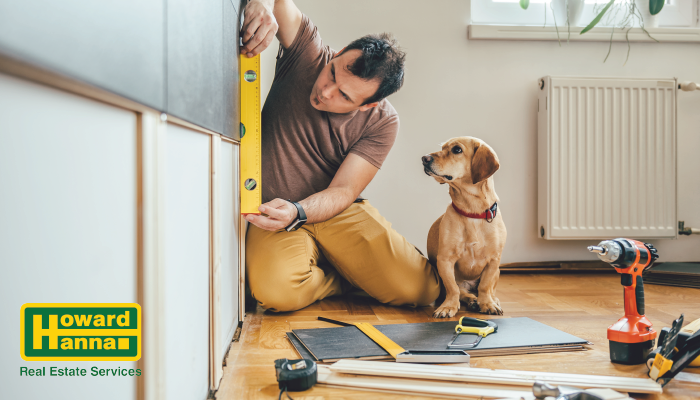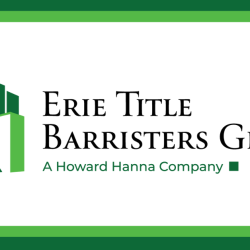If it’s time to sell your home, then you’ve probably wondered what you need to do to prepare your house for the selling process. Repairs and upgrades are often the biggest costs of selling a home. Even the best-kept space can suffer from daily wear and tear over time, so chances are that you now have to decide what is worth repairing and upgrading, versus how much potential there is for selling a home as is.
The good news is that you don’t have to repair and upgrade every part of your home before listing it. Many buyers today are comfortable purchasing spaces that only require minor cosmetic work after moving day, so you don’t have to work at creating the perfect interior or exterior before your home goes on the market.
Instead, you should focus on the repairs and upgrades that will make or break a sale. By prioritizing these types of projects, you’ll be able to sell your home knowing that you spent your time and money wisely when preparing for the sale.
Now that you know where to focus your efforts, we’re going to tell you how to plan your next steps so that you can plan out your repairs and upgrades moving forward:
Step 1: Research Your Local Real Estate Market
Before you commit to any repairs or upgrades, you need to know what else is selling in your area right now. An easy way to do this is to work with an agent and to tour other homes for sale near yours. By studying the condition and amenities in these houses, you’ll have a better idea of what your own home is competing with. For example, if you visit homes with recently upgraded kitchens, you’ll know that your older kitchen needs some work to compete with other properties.
During this stage, you can also work with your agent to consider the cost of possible home improvements – ranging from minor repairs and full upgrades – against the home’s market value after the improvements are made. This evaluation will help you start to determine which improvements will generate a return on investment, and which ones aren’t worth your energy.
Step 2: List the Possible Projects Around Your Home
Once you’ve researched your area and other homes for sale, you’re ready to begin listing the potential work you’ll do in your own home. It’s helpful to list this work out bit by bit, starting with basic tasks and working up to bigger projects.
As you make your lists, you can also categorize the work you’ll be doing, helping you focus on high-priority items above all others. Work on a home tends to fall under two labels:
- Upgrades, which are optional things you may do to maximize the value of your house. An example would be replacing carpeting with hardwood floors.
- Repairs, which are important things you do to maintain the current value of your house. Replacing existing carpeting with new carpeting is an example of this.
With these categories in mind, we recommend further breaking your lists down into the following types of focus areas and actions:
Basic Repairs and Upgrades
Basic repairs and upgrades focus on updating key areas of the home, as well as the appliances that make the home functional. When making your list of potential projects, find and include defective, broken, or worn-out items in your house. Easy-to-spot problems or malfunctioning systems and appliances are likely to make a bad impression on prospective buyers, who may suspect there are bigger unseen problems hiding behind the little ones.
Possible basic improvements you should include on your list:
- touching up cosmetic issues, such as adding a coat of paint or replacing worn or stained carpets
- patching holes and cracks in the walls and ceilings
- fixing broken appliances, frayed wiring, and HVAC systems
- repairing leaky faucets
- replacing broken window glass
Minor Repairs and Upgrades
After you’ve determined your potential basic repairs, you’ll want to dive deeper into your home to find additional work worth considering. These specific repairs and upgrades will be in your kitchen and bathroom – two parts of the home to which buyers pay very close attention.
In the kitchen, consider:
- whether or not the refrigerator, stove, dishwasher, and microwave are in good working order
- there are leaks in the fridge, freezer, and sinks
- if your kitchen includes old hardware, dated tiling, or counters in poor condition
- if the appliances in your kitchen are worth the expense of upgrading
In the bathroom, consider:
- cleaning the grout on the existing tile
- regrouting if necessary
- replacing old plumbing, light fixtures, and broken shower tiles
Step 3: Get a Professional Opinion on Major Upgrades and Repairs
Once you’ve listed possible tasks focused on the basics of home essentials and functionality, your next step is to dig deep into your home repair and upgrade needs. These projects involve the evaluation of your home’s structural and mechanical status. In other words, they are most likely to make or break your efforts to sell your house.
These repairs matter because serious home buyers are likely to ask for a home inspection, where any discovered major issues will lead to problems in closing the deal on a sale. Rather than waiting to learn about your problems from a buyer, you’re better off addressing major inspection issues before listing your home.
A pre-sale home inspection can help you identify major issues and fix them before you try to sell your home. In general, these visits may reveal the following:
- Roof issues. Since the roof protects the home as a whole, repairs to it are essential. You will need to address broken or missing tiles, shingles, and ridge caps, as well as address any damage or cracks in the sealant and underlayment.
- Structural problems.
- Electrical issues. All electrical panels and circuit breakers should meet current codes before your home is listed. To ensure your system is up-to-date, call an electrician for an evaluation.
- Foundation damage. This supports the weight of the house, so damage to the foundation is always serious.
Step 4: Plan Your Repairs and Upgrades With a Real Estate Agent
After listing these various potential repairs and upgrades, you’ll be ready to determine which items on the list are worth your time, money, and energy to improve. However, you shouldn’t make this decision alone!
Before making a single repair or upgrade to your home, it’s best to enlist the services of a real estate agent. Real estate professionals are your best resource in checking the pulse and health of a particular market, and at this stage in the process, you will have professional inspections as well as your personalized list to bring to an agent. With their knowledge of the current market and experience evaluating home inspection reports, a real estate agent will be able to advise you on which repairs should be completed before listing your home – as well as which ones are best folded into the sale.
While selling your home takes time and effort, it’s worth investing the energy into planning the best repairs and upgrades for your property. By considering the state of your home, and bringing in the professional assistance of evaluators and real estate agents alike, you can confidently make repairs and upgrades knowing that after your hard work, local buyers will like what they see.
Ready to sell your home? Contact a Howard Hanna real estate agent near you! In addition to their knowledge of the ins and outs of the real estate market, they can also help you identify the best spaces to repair and upgrade in your home!










[…] If it’s time to sell your home, then you’ve probably wondered what you need to do to prepare your house for the selling process. Repairs and upgrades are often the biggest costs of selling a home. Even the best-kept space… Read more › […]
Good ideas and advice. Thanks!!